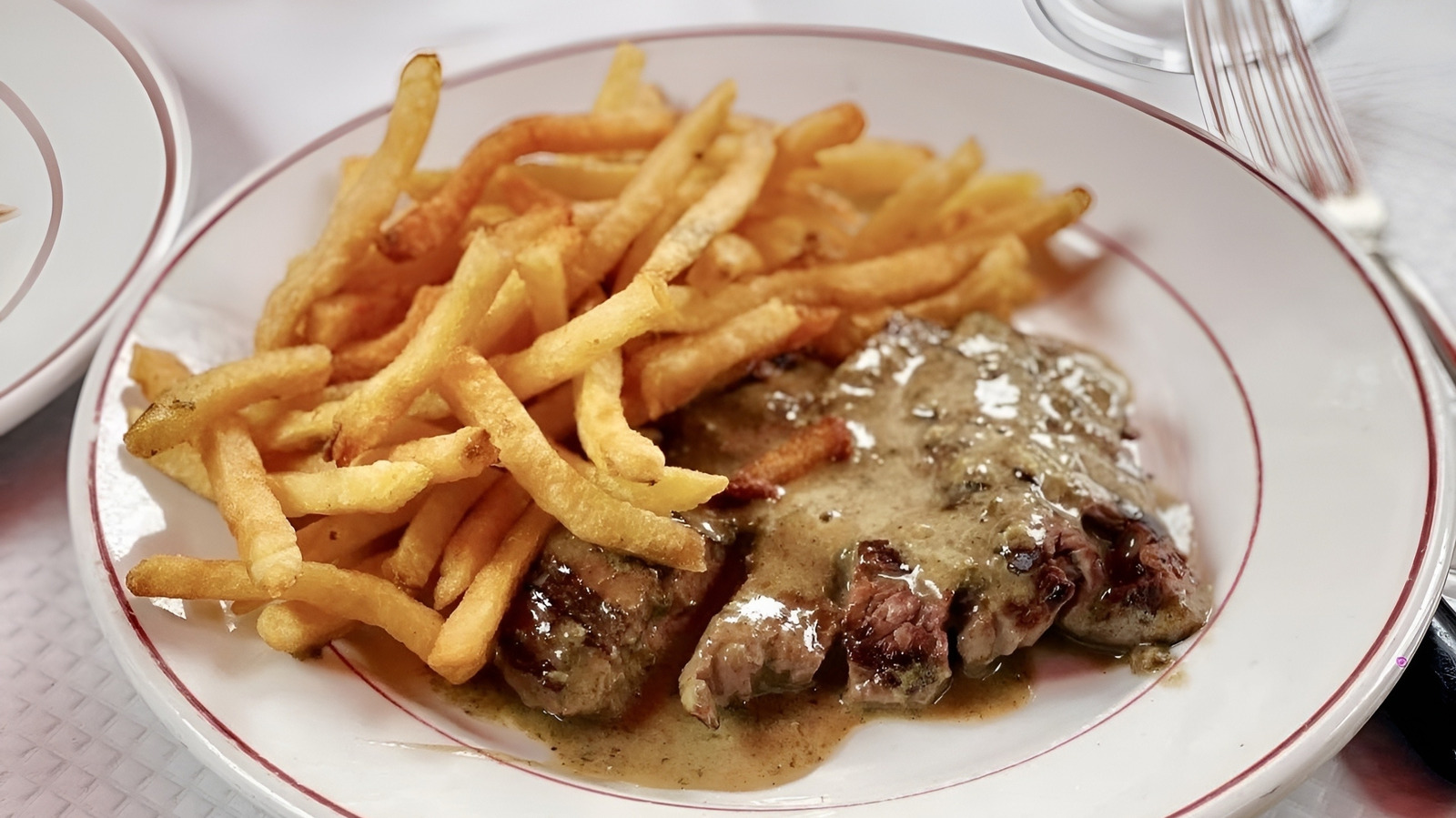When you think of a classic hearty meal, “steak and potatoes” may be the first thing that comes to mind. Whether baked, roasted, or fried, the starchy root vegetable serves as the ideal complement to a savory slab of red meat. Of course, one of our favorite forms of potato to pair with steak is the French fry. Although they may actually trace their origin to Belgium, those strips of fried taters are indeed a staple in French cuisine. You can find them served alongside steak in the dish dubbed steak frites. (The term “frites” is French for “fries.”) Of course, you’ll also see “steak fries” listed on chophouse menus across the United States. So, is this just how everyone refers to fries that are paired with steak? Well, not exactly.
Etymologically speaking, steak frites and steak fries may appear to have the same name, but they are two different things. Unlike, steak frites, steak fries belong to a particular subset of French fries. And which one you can expect to be served may depend on whether you’re ordering them at a French restaurant or an American one. Let’s break it down the major differences, lest you’re left scratching your head when you don’t get the item you thought you ordered.
What is steak frites?
Ubiquitous in bistros and brasseries both in the United States and abroad, steak frites is a French favorite (albeit with similarly disputed origins as French fries) that actually refers to a specific dish. As you’ve probably guessed, it is a serving of steak and fries, but there are some particulars that set it apart. For one thing, there’s the type of steak used. One cut that’s especially popular for steak frites is bavette, also known as flap steak, that’s taken from the bottom sirloin. It is somewhat similar to flank steak in that it’s thin, sliceable, and suitable for quick, high-heat cooking. However, a bavette cut contains more marbling, therefore making it more tender and flavorful. Nevertheless, you can also make restaurant-quality steak frites with other tender, well-marbled cuts such as ribeye, flat iron, and porterhouse.
Next up, the fries. When it comes to the all-important potato portion of the dish, the secret lies in soaking and then double frying the fries, which helps to achieve a fluffy inside, but crispy and sturdy exterior crust. And, of course, no steak frites is complete without the addition of a rich sauce as its finishing touch. One traditional option is béarnaise sauce, made with egg yolks, butter, and vinegar. It is considered a variation of hollandaise, though it differs in flavor thanks to the inclusion of herbs like shallot and tarragon. Other go-to toppers for steak frites include creamy green peppercorn sauce, herby butter sauce, or seasoned aioli.
What are steak fries?
Steak fries, sometimes called steak-cut fries, are a particular type of French fry. Popularized by U.S. fast-casual dining chains in the 1970s and ’80s, the distinctly American (and now, distinctly nostalgic) variation of the fry is marked by its thick cut, flat surface, and ultra-fluffy inside. The exact origin of their name is unclear, but they may have picked up the moniker for being served with steak.
Although they are heartier and more pillowy than traditional, shoestring, or crinkle-cut varieties, steak fries are regarded by some as being at the bottom of the fry barrel. As the New York Times recently reported, the fluffy taters only make up about 2% of the U.S. fry market by pound, according to data by market research company Circana.
But while they may have dwindled in terms of overall popularity and availability, steak fries do maintain a cult foothold at some establishments. At the national burger chain Red Robin, for instance, seasoned, thick-cut steak fries still remain a signature staple. Sure, they’re served sans steak, but they certainly go just as well with a juicy burger and dipping sauce.







